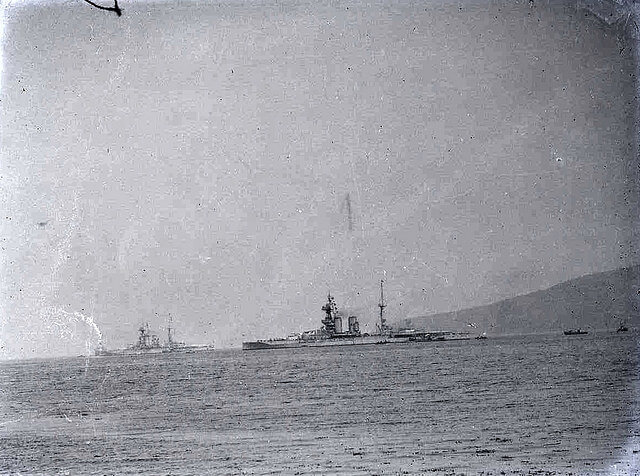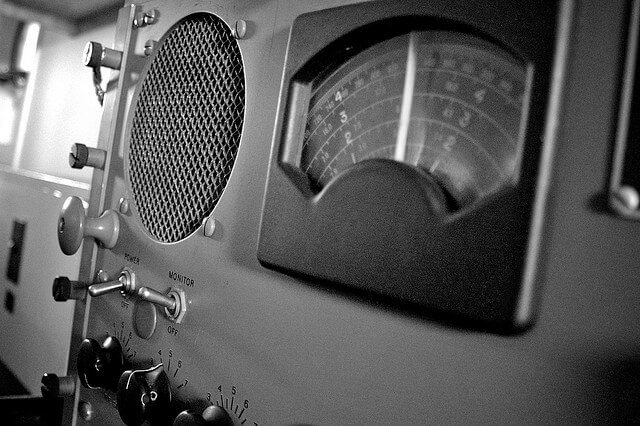
WAR AT SEA 1914-15: AN ACCELERATING REVOLUTION (PART 1)
It’s an irony of history that we no longer comprehend much of the way in which ships were worked and fought in 1914-1918. Indeed, the interest in the Nelsonic era and the combination of extensive research, historically informed fiction and replicas, as well as continuing square rigged sail training has meant that our knowledge of what was happening onboard the Victory and her sisters in 1805 is greater than for the Iron Duke and the Grand Fleet in 1914. The deficiency becomes even more apparent comparing naval history with that of land forces, particularly on the Western Front. A body of work has profoundly changed our view of the land war, dispelled the myth of ‘lions led by donkeys’, and above all, conveyed the complexity and the learning curves involved. For the war at sea, understanding is much less complete.
We tend to consider the ‘Fisher Era’ as a continuum from Admiral ‘Jacky’ Fisher’s accession as First Sea Lord in 1904; in reality, the pace of development not only accelerated but became truly multi-dimensional only after about 1910. Pressures were thus intensifying in the years immediately before 1914. Those involved were struggling to learn a new language of naval operations with an incomplete dictionary and very little grammar.
Exercises at sea didn’t help as much as they should. Too many were set piece, closer to a chess match than the uncertainties of operating with incomplete information. They were conducted for limited periods with little consideration to the vagaries of visibility or surprise. The annual Grand Manoeuvres, effectively the only semi-‘free play’ simulations, shared these limitations. If an umpire assessed that you got within range of a more heavily armed opponent, you were judged out of action. Such an approach militated against risk taking and against a sophisticated approach to manoeuvring and the use of fire power.
Had there been more realistic exercises, which included more live firings, navies might have better understood what was really going to happen at sea, yet people were not complacent or entirely misguided. The pace of change was so fast that learning how to use it all was a problem arguably impossible to solve in the time available before August 1914.
We also need to appreciate just how financially restricted the Royal Navy - and the Imperial Germany Navy - were. Money had to be found by the British for new 15 inch gun battleships and oil firing. At-sea training, amongst other things, took a heavy hit - one has only to note the intensity of Admiralty demands for improved fuel economy to understand this. The Germans were even more constrained. Almost all tactical exercises were conducted at scaled down speeds. This allowed the correct relative movement, but was in no way preparation for the challenges of combat. At more than £50 for a heavy shell, a thousand pounds for a practice torpedo and nearly as much for a practice mine—both the latter could all too easily be lost - it shouldn’t be surprising that the true capabilities of the new weapons and thus the techniques needed to deal with them should go partly unexamined.
So much was new. The first truly long-range submarine (a British boat, not a German one) didn’t enter service until 1908 and it took its success in the 1910 manoeuvres to prove its potential. The Germans were no further ahead—indeed, in August 1914, U-Boats were not equipped to navigate for extended periods out of sight of land. They had been intended largely for coastal defence and the sortie conducted by boats of the First Flotilla into the northern North Sea in August 1914 was the furthest they had yet sailed. Two didn’t return.
Destroyers only began to get radio in 1908. The first submarine wireless set wasn’t fitted experimentally in a British unit until 1910. Systematic installation began in 1912, but the following year the C-in-C Home Fleet commented that submarines were yet to have soundproof cabinets installed and that operators found it difficult to hear signals when the diesels were running. When submarine wireless was fitted, its effective range was often no more than 30 miles, which was all the original 1911 staff requirement had proposed.
The rapid extension of radio installations worsened the existing shortage of trained personnel, which was acute. Furthermore, most of the smaller ships didn’t have enough operators to keep a continuous watch, which meant that they could only be contacted at specific times. British destroyers had only one operator in 1914, despite this having been identified as a serious deficiency as early as 1912. They didn’t receive an additional telegraphist until well into 1915—it took the war for the additional manpower (and the associated expense) to be approved.
Aviation was no more advanced on either side. The Royal Navy had conducted only one sustained tactical exercise from an ‘aircraft carrier’ before August 1914. Over the 14 days during which the converted cruiser Hermes took part in the 1913 manoeuvres with two seaplanes embarked, bad weather prevented flying for three days, while fog curtailed sorties on two days. One machine had a wing ripped off during a gale on 23 July, while three sorties resulted in damage to the aircraft. Overall, there were only five successful flights, even if the use of airborne radio was demonstrated (although compasses which worked in the air had yet to be invented). Ironically, after an engine failure had resulted in Seaplane No.81 being forced down during the final sortie, she and her crew were rescued by a passing German merchant ship!
For the German Navy, the performance (with suitable weather) of the first zeppelin in the September 1913 manoeuvres was extremely encouraging, but L1 crashed in a thunderstorm a few weeks after with 14 dead. In October 1913, L2 burnt up in the air, killing all its crew. Although the Germans had hired a commercial unit to allow training to continue, the naval zeppelin force in August 1914 was a single airship, L3. The most basic techniques of scouting, reporting and navigation over the sea were still being learnt, as were the effects of weather.
Navies in 1914 were, in short, a ‘work in progress’.
Author - James Goldrick is an adjunct professor at UNSW Canberra and has just completed a visiting fellowship at All Souls College, Oxford. His book, Before Jutland: The Naval War in Northern European Waters August 1914-February 1915, was published by the United States Naval Institute in May this year. Image courtesy of Flickr user Ballast Trust.
 This article was originally published on The Strategist and is republished here with kind permission.
This article was originally published on The Strategist and is republished here with kind permission.













